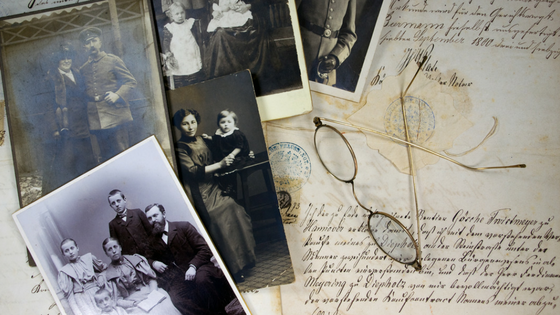Genealogy: The Basics
 25
25Jun
Whether you are a beginner who is just getting started or a tenured professional looking to improve your skills, there are some basic things that every genealogist should know and understand. Once you have these four basic skills down, you will open an entirely new can of worms: a bunch of new research opportunities. Here are the basics you need to know.
Using Microfilm and Microfiche Machines
Because millions of genealogical records from all over the world have been digitized, you will likely be doing a large portion of your research online on the computer. However, not everything is available digitally and may require visiting an archives building or family history library.
The majority of these records stored in these places are stored on microfilm or microfiche. Politely ask an employee there to teach you how to use these machines the first time you attend. Take notes for yourself if necessary. Then, the next time you visit and every time after that, you will be able to research like a professional on your own.
Using the U.S. Census
Since 1790 and every ten years since the census is taken. Updated and new censuses are kept private for 72 years and are not released to the public for privacy and safety reasons. Census records are available from 1790’s - 1940’s, however, the 1890 census is not available because it was almost entirely destroyed in an archives fire in the ’30’s.
Censuses are available online at ancestry.com or can be found in family history libraries on microfilm. Censuses will likely be one of the first resources because every family historian with an American heritage will need to research it.
Labeling and Storing Photos
Photos are worth a thousand words and help bring stories to life. They should be treated like treasures, as one day the photograph will be old (and maybe that day is already here!). To ensure the important details of the photograph are not forgotten, make sure each photo is labeled correctly on the back of the photo.
Use an archival safe pen to prevent the ink from fading, write down names and their ages, where the photo was taken, the date, and anything else you believe is important to note for genealogy’s sake. To keep the pictures safe and protected, store them in an acid-free, archival safe photo album.
If the photos are digital, make sure this important information is included in the file’s name. To stay organized, sort the photos into folders for each category. Be sure to store the drive in a safe place.
Using Genealogical Software
There are tons of different software programs available for recording your family history findings. Try several of them before choosing the one you plan to use and that best fits your needs. The program software you choose will probably be the one you use for your entire genealogical journey, so you will need to keep the software updated. Using a software will help keep your research findings organized and easily accessible.
